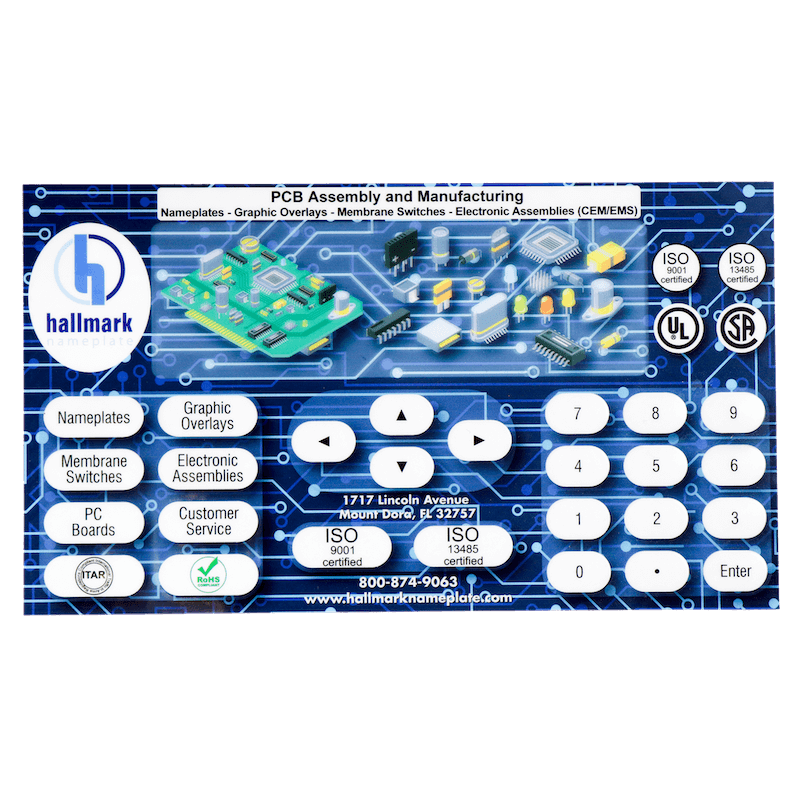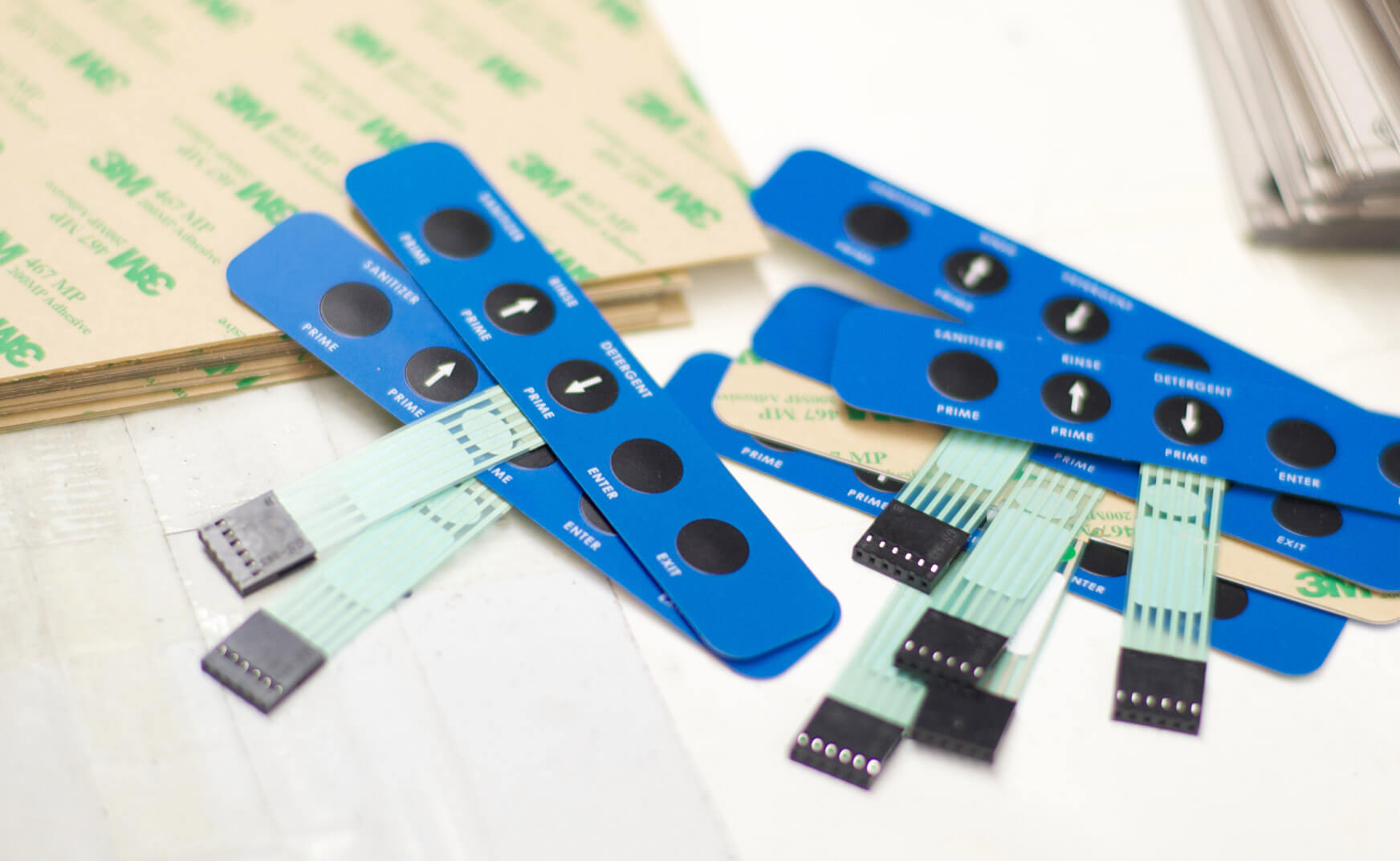Ensuring Quality and Longevity with Membrane Switches in Electronics
Wiki Article
Discover How Membrane Switches Function and Their Duty in Modern Electronic Devices
Membrane Switches stand for an advanced assimilation of modern technology and layout within the world of contemporary electronics, acting as vital interfaces in numerous devices. Included numerous layers, these buttons use pressure-sensitive mechanisms to facilitate user communication. Their applications extend various markets, from customer electronic devices to medical equipment, highlighting their adaptability and relevance. Recognizing the details of Membrane switch functionality and their broader ramifications in boosting customer experience welcomes more exploration into their layout, advantages, and the cutting-edge growths forming their future in innovation.
What Are Membrane Switches?

Membrane switches are distinguished by their longevity and resistance to ecological aspects, such as dust, dampness, and extreme temperatures. They can be tailored with numerous graphics, shades, and tactile comments options, improving user experience while maintaining visual charm - membrane switches. The incorporation of printed circuits enables for smooth integration into tools, enhancing overall functionality.
The adaptability of Membrane buttons is obvious in their capability to support both intricate and simple control features. They can integrate functions such as LED indicators and touch-sensitive technology, accommodating details user needs. As technology continues to progress, Membrane Switches stay crucial for allowing instinctive and efficient interface, therefore playing a pivotal role in the improvement of modern-day electronic gadgets.
Parts of Membrane Buttons
Membrane switches are made up of several vital parts that collaborate to develop a trusted and useful user interface. The primary aspects consist of the visuals overlay, adhesive layer, spacer layer, and conductive traces.The visuals overlay functions as the customer interface, normally published on a flexible substratum such as polyester or polycarbonate. This layer not only supplies aesthetic charm yet likewise includes responsive responses, aesthetic hints, and safety functions. Under the graphic overlay lies the sticky layer, which protects the switch to the device and ensures durability against environmental stress and anxieties.
The spacer layer is essential for maintaining the needed space in between the graphic overlay and the circuit layer. When stress is applied, this void enables for the activation of the switch. The conductive traces, typically made from silver or carbon, create the electric pathways that complete the circuit when the switch is involved.
In addition, a backing layer may be included for structural support and insulation. These parts work together flawlessly, guaranteeing that find out here now Membrane switches are both straightforward and resilient, making them crucial in different modern digital applications.
How Membrane Switches Job
Exactly how do Membrane Switches feature effectively within digital tools? Membrane Switches operate on the principles of pressure-sensitive technology, utilizing a layered building and construction that includes visuals overlays, adhesive layers, and conductive aspects.The design of Membrane buttons is essential for their efficient procedure (membrane switches). The layers are carefully engineered to supply responsive comments, toughness, and resistance to ecological variables such as dampness and dirt. The incorporation of domes-- small, elevated areas within the switch-- enhances responsive reaction, offering users with a noticeable click feeling upon activation
Moreover, Membrane buttons can be tailored in terms of size, form, and graphics, making them appropriate for numerous applications. They are usually utilized in control panels, clinical devices, and customer electronic devices due to their sleek layout and integrity. Overall, the effective functioning of Membrane switches is critical in enhancing customer interaction and making sure smooth operation in modern digital gadgets.

Applications in Modern Instruments
Using their one-of-a-kind layout and functionality, Membrane buttons have become indispensable elements in a broad range of modern digital tools. These versatile user interfaces are employed in consumer electronics, commercial tools, clinical gadgets, and automobile controls, offering seamless individual interaction.In consumer electronics, Membrane switches are commonly found in devices like microwaves, washing machines, and other family gadgets, where they allow user-friendly control with a smooth profile. Their low-profile layout helps with integration into compact devices, navigate to this site improving visual allure without jeopardizing capability.
In industrial applications, Membrane Switches act as control panels for equipment, providing durability and resistance to rough settings. Their capability to endure moisture and pollutants makes them suitable for usage in production and processing markets.
Clinical gadgets likewise gain from Membrane switches, which are developed to be very easy to clean and maintain, guaranteeing hygiene in medical setups. They are often made use of in diagnostic devices, patient monitoring systems, and mobile clinical gadgets, where dependability is critical.
Benefits of Membrane Buttons
Among the key advantages of Membrane switches is their adaptability, which enables them to be tailored for a range of applications across numerous industries. These switches can be designed in numerous sizes and shapes, suiting one-of-a-kind item needs while supplying smooth assimilation right into tools. Their thin profile enables a streamlined and compact design, often enhancing the visual allure of electronic products.One more substantial advantage is their resilience - membrane switches. Membrane switches are usually resistant to dust, moisture, and chemicals, making them perfect for harsh environments. This durability expands their lifespan compared to traditional mechanical buttons, minimizing the requirement for frequent replacements
Additionally, Membrane Switches offer cost-effectiveness. The manufacturing process entails printing modern technologies that minimize manufacturing costs, specifically for huge runs. This affordability, combined with low maintenance needs, makes them an appealing alternative for manufacturers.

Final Thought
In verdict, Membrane Switches stand for a considerable advancement in user interface modern technology within modern electronic devices. As the need for intuitive and durable additional reading user interfaces proceeds to grow, the duty of Membrane switches in shaping user experience will definitely broaden.Membrane Switches stand for a sophisticated integration of innovation and layout within the world of contemporary electronics, offering as important user interfaces in various devices.In the world of modern electronic devices, Membrane Switches serve as important elements that promote user communication with gadgets. As innovation proceeds to evolve, Membrane Switches stay essential for making it possible for intuitive and efficient user interfaces, thus playing a critical role in the innovation of contemporary electronic gadgets.
Just how do Membrane Switches function successfully within electronic tools? In general, the efficient performance of Membrane switches is crucial in improving individual communication and guaranteeing seamless procedure in modern electronic tools.
Report this wiki page